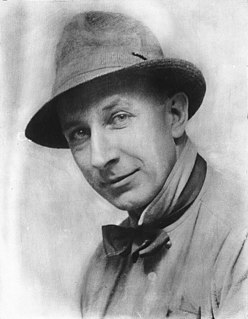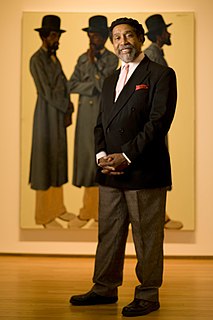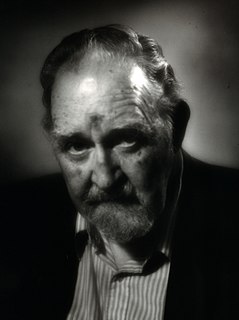Peter Rice Bruun (b. 1963) is a Danish-American artist, curator and writer.
Contents
- Early life
- Education
- Early career
- Community Engagement
- Art on Purpose
- Back to the Studio
- The New Day Campaign
- Move to Maine

Peter Rice Bruun (b. 1963) is a Danish-American artist, curator and writer.

Born in Copenhagen to American Barbara "Bobbie" Leventhal and Danish surgeon and naturalist Bertel Bruun, Bruun spent his early years in Denmark before relocating to the U.S. after his parents divorced.
Bruun spent his elementary school years in New York City attending Manhattan Country School. After moving to London for his step-father Player Crosby's business and attending the American School in London for several years, Bruun went on to the Dalton School where he frequently took art classes, studying with the likes of Aaron Kurzen and graduating in 1981.
During his freshman year at Williams College, Bruun took an introductory art history course and discovered he had a knack for the subject, declaring an Art History major. In fall of 1983, Bruun spent a semester abroad in Florence, an experience that proved pivotal. He fell in love with looking at art, traveling each weekend to tour cathedrals and museums.
Though not a studio major at Williams, Bruun took part in the Senior Art Show at the Williams College Museum of Art in spring 1985. Around the same time, he also exhibited at the Berkshire Museum in Pittsfield, Massachusetts, having been a co-winner (with classmate Michael Govan) of the Bloedel Travel Fellowship, given annually to a Berkshire County art student.
After college, Bruun earned his MFA from Maryland Institute College of Art Mount Royal School of Art, attending from1987 to 1989 and studying with Babe Shapiro, Sal Scarpitta and Hermine Ford.
After receiving his MFA in 1989, Bruun began working in MICA’s Exhibitions Department as Gallery Manager, a position he left after six months to begin teaching at Baltimore area colleges as an adjunct professor of art. Juggling a new young family (his first of three daughters was born in early 1989), part-time jobs, and his studio work, he had little time for anything else, though he made a point of visiting museums and galleries as often as he could.
Influenced by a new job at Villa Julie College (now Stevenson University) in 1997, Bruun began to bring curation and social engagement into his art practice. The university had a new art center and gallery, but no plans for an exhibitions program. Then an adjunct professor, convinced the administration to allow him to serve as Exhibitions Director for a year. The undertaking succeeded, the gallery garnering such recognition as Baltimore City Pape r’s “Top 10” for the year and Baltimore Magazine’s annual “Best of” list.
After leaving Villa Julie College in 1998 and following a six-month period in which he worked briefly as Exhibitions Manager for the Contemporary Museum of Baltimore in 1999, Bruun became founding Exhibitions Educator for The Park School of Baltimore. As Exhibitions Educator, he pioneered a gallery program that put side-by-side works by local and national artists with art and objects from and by Park students and faculty.
In 2005, seeking to bridge the divide between his work at Park School and his studio practice, Bruun founded the non-profit organization Art on Purpose, dedicated to using art to bring people together around issues and ideas. At the outset, projects were intended to at times center on his studio practice. Within a year, however, his art making was displaced by demands of non-studio-based projects such as Real City Dream City, Maps on Purpose, Everyone an Artist, and Heroes in Our Midst—projects involving multiple artists, communities, and major cultural institutions.
In June 2010, Bruun stepped down as founding director, though he remained involved in Art on Purpose through 2011 and its final project (the organization folded in 2012), serving as Coordinator for the Black Male Identity Project. In addition to his work with BMI in 2011, Bruun was contracted by Marian House to create 30 Women, 30 Stories, a project centered around a book, audio stories, DVD, and traveling exhibition highlighting the success stories of 30 women whose lives had been transformed by Marian House.
Following Bruun’s tenure with Art on Purpose he picked up in the studio where he had left off: making work derived from self-portraiture, continuing to unearth new variations from a single motif. At the same time, interested in applying all he had learned about social engagement from his Art on Purpose years to his studio practice, he began to host small gatherings in his studio—boutique events with select works of his on the wall, back-drops for performance and sharing on topics related to the art on display; sketches of social engagement possibilities.
During this time (2013) he conceived of his first major post-Art on Purpose studio project, Autumn Leaves —similar to his previous studio projects though grander in scale. By early 2014 had recruited more than 70 participants for the project.
Then, his daughter Elisif died.
Within hours of learning about his daughter’s death from an accidental overdose, Bruun had already begun envisioning drawings he needed to make about his loss.
That was just the beginning.
After completing the Autumn Leaves project in fall 2014, Bruun began work on the New Day Campaign, an initiative challenging the stigma of addiction, including his own project honoring his daughter, “Elisif’s Story” . The success of the Campaign in 2015 attracted national attention, and Bruun was invited to speak at several behavioral health conferences and received broad recognition, including a Baltimore City Health Equity Leadership Award from Baltimore City’s Health Commissioner and a commendation from entrepreneur and philanthropist Michael Bloomberg, who named him one of 10 national innovators at the 2018 Bloomberg American Health Summit in Washington, D.C.
Around the same time, Bruun’s studio practice took a turn: he began making abstract works based figures in relationship to one another rather than self-portraiture. He began this pivot while in residence at Yellow Barn, where the interaction between musicians playing together struck Bruun as a powerful metaphor of what it means for humans to need one another.
Bruun began working on Beyond Beautiful: One Thousand Love Letters in 2017—a project that culminated in early 2019. At its conclusion and ready for another change, Bruun also ended the New Day Campaign.
In 2019, Bruun moved to midcoast Maine, and since then has been making paintings and drawings in various media, all inspired directly by his need to process the loss of his daughter and all that followed. He is contemplating a major studio project in 2024 (the 10th anniversary year of his daughter’s passing), tentatively called First the Crying.
Since 2020, Bruun has begun two different digital initiatives. Yarrow & Cleat became a platform for his writing, something that previously had never before been front and center in his work. Additionally, the online exhibition program Bruun has initiated on his Bruun Studios website/platform permits him to continue his collaborative work in the digital realm. ( Grace was his first online exhibition; Becoming is his second multi-media online endeavor.)
He continues to seek balance between solitary work and community connection, now that his community is no longer limited by geography.

Bridget Louise Riley is an English painter known for her op art paintings. She lives and works in London, Cornwall and the Vaucluse in France.

Willem de Kooning was a Dutch-American abstract expressionist artist. He was born in Rotterdam and moved to the United States in 1926, becoming an American citizen in 1962. In 1943, he married painter Elaine Fried.

Rembrandt Peale was an American artist and museum keeper. A prolific portrait painter, he was especially acclaimed for his likenesses of presidents George Washington and Thomas Jefferson. Peale's style was influenced by French Neoclassicism after a stay in Paris in his early thirties.

Richard Diebenkorn was an American painter and printmaker. His early work is associated with abstract expressionism and the Bay Area Figurative Movement of the 1950s and 1960s. In the late 1960s he began his extensive series of geometric, lyrical abstract paintings. Known as the Ocean Park paintings, these paintings were instrumental to his achievement of worldwide acclaim.

Elaine Marie Catherine de Kooning was an Abstract Expressionist and Figurative Expressionist painter in the post-World War II era. She wrote extensively on the art of the period and was an editorial associate for Art News magazine.

George Wesley Bellows was an American realist painter, known for his bold depictions of urban life in New York City. He became, according to the Columbus Museum of Art, "the most acclaimed American artist of his generation".

Barkley L. Hendricks was a contemporary American painter who made pioneering contributions to Black portraiture and conceptualism. While he worked in a variety of media and genres throughout his career, Hendricks' best known work took the form of life-sized painted oil portraits of Black Americans.
Paul Mpagi Sepuya is an American photographer and artist. His photographs focus heavily on the relationship between artist and subject. He often explores the nude in relation to the intimacy of studio photography. The foundation of Sepuya's work is portraiture. He features friends and muses in his work that creates meaningful relationships through the medium of photography. Sepuya reveals the subjects in his art in fragments: torsos, arms, legs, or feet rather the entire body. Through provocative photography, Sepuya creates a feeling of longing and wanting more. This yearning desire allows viewers to connect deeply with the photography in a meaningful way.

Marguerite Munger Peet (1903–1995) was an American painter. She did not have a far-reaching artistic reputation during her lifetime as she did not often exhibit her work in public. Her family found over 430 of her paintings after her death, and she has been the subject of three major retrospectives in the last 15 years. Her most significant work was created under the tutelage of famed American Regionalist painter Thomas Hart Benton.

Walter S. Sheffer was an American photographer and teacher, born in Youngsville, Pennsylvania. He moved to Milwaukee, Wisconsin in 1945 to work at the studio of John Platz, Milwaukee's main society photographer. When Platz retired, Sheffer inherited his clientele and was able to establish his own "look" and very successful portrait studio by 1953. He also taught advanced portraiture at the Layton School of Art from 1952 to 1970.

Alexander Munro was a British sculptor of the Pre-Raphaelite movement. He concentrated on portraiture and statues, but is best known for his Rossetti-influenced figure-group Paolo and Francesca (1852), which has often been identified as the epitome of Pre-Raphaelite sculpture.

Nick Miller Is an Irish contemporary artist who has become known for reinvigorating painting and drawing in the traditional genres of Portraiture, Landscape and Still-life. He has developed an intense and individual approach to the practice of working directly from life, that has been described as a form of encounter painting.

Leopold Gould Seyffert was an American artist. Born in California, Missouri and raised as a child in Colorado and then Pittsburgh, his career brought him eventually to New York City, via Philadelphia and Chicago. In New York the dealer Macbeth established him as one of the leading portraitists of the 20th century and his over 500 portraits continue to decorate the galleries, rooms and halls of many of America's museums and institutions.
Paul Ramírez Jonas is an American artist and arts educator, who is known for his social practice artworks exploring the potential between artist, audience, artwork and public. Many of Ramirez Jonas's projects use pre-existing texts, models, or materials to reenact or prompt actions.
May Wilson was an American artist and figure in the 1960s to 1990s New York City avant-garde art world. A pioneer of the feminist and mail art movement, she is best known for her Surrealist junk assemblages and her "Ridiculous Portrait" photocollages.
George Holz was born in Oak Ridge, Tennessee, graduated from the Art Center College of Design in Pasadena, California, and assisted for Helmut Newton, whom he credits with guiding his career. As a fledgling photographer, he lived in Milan and Paris, where he shot beauty and fashion for major European magazines such as Italian Vogue and French Elle. Afterward, he moved to New York City, where he set up his famous studio on Lafayette Street, traveling frequently to Los Angeles and Europe to shoot fashion, advertising, and portraiture for major publications such as Vanity Fair and Harper's Bazaar. His fine-art nudes have been exhibited in galleries and museums around the world. His shows have included “Original Sin” and “Three Boys from Pasadena – A Tribute to Helmut Newton” with fellow Art Center alumni Just Loomis and Mark Arbeit. Holz has collected a variety of prestigious industry awards over the years including a Grammy and a Clio.

Maren Hassinger is an African-American artist and educator whose career spans four decades. Hassinger uses sculpture, film, dance, performance art, and public art to explore the relationship between the natural world and industrial materials. She incorporates everyday materials in her art, like wire rope, plastic bags, branches, dirt, newspaper, garbage, leaves, and cardboard boxes. Hassinger has stated that her work “focuses on elements, or even problems—social and environmental—that we all share, and in which we all have a stake…. I want it to be a humane and humanistic statement about our future together.”

Irving Guyer (1916-2012) was an American painter. While successful in New York through the 1960s, Guyer chose to work away from the New York gallery scene for much of his career. In the last decades of his life, he developed increasingly innovative, formally sophisticated work, combining masterful landscape and color field painting with geometric abstraction. Recently, his later works were discovered and have been acquired by the Berkeley Art Museum and Reed College Art Collection.
Amy Sherald is an American painter. She works mostly as a portraitist depicting African Americans in everyday settings. Her style is simplified realism, involving staged photographs of her subjects. Since 2012, her work has used grisaille to portray skin tones, a choice she describes as intended to challenge conventions about skin color and race.
Lucy Taggart was an artist and art educator from Indianapolis, Indiana, and the daughter of Thomas Taggart, a successful hotelier and influential Indiana politician. Recognized as a talented and versatile artist during a career that spanned the first three decades of the twentieth century, she studied with several noted artists, such as William Merritt Chase, John Henry Twachtman, Kenyon Cox, William Forsyth, Otto Stark, Charles Webster Hawthorne, Cecilia Beaux, and Harriet Whitney Frishmuth. Taggart, who was especially known for her portraiture, received the John Herron Art Institute's J. Irving Holcomb Prize in 1922, the Hoosier Salon's Merit Award for figure composition in 1925, and the Hoosier Salon's Merit Award in 1926 for best picture painted by a woman. Her work is represented in the collections of the Indianapolis Museum of Art.